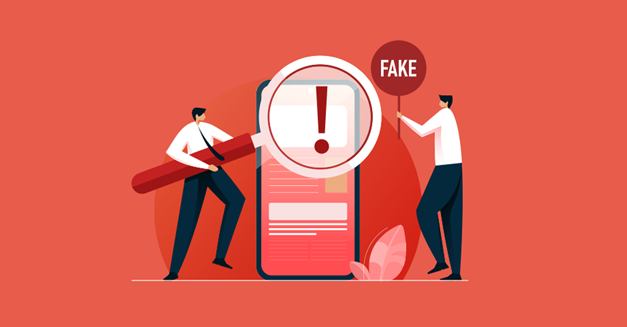6 Things Your Business Needs To Understand About Customer Experience
If you’re like most business owners, you would love to have positive reviews everywhere you look. Unfortunately, that’s not always the case- even for businesses with excellent customer service.
According to a recent study by PWC, almost one-third of customers (32%) will leave a brand after only one bad experience. And when it comes to reviewing content- customers are many times more likely to review a bad experience than a good one.
What does this mean for your business? You must focus on measuring and improving your online customer experience from day one if you want them to stick around long term.
What is customer experience?
The customer experience is the total of all customer interactions with your business. It’s everything from navigating the website to talking to customer service and receiving the product/service they bought from you. Everything you do impacts your customers’ perception and their decision to keep coming back or not—so a great customer experience is your key to success.
How can you create a successful CX? There are four key steps:
1) Always be mindful of your Customers’ journey through your brand or business. What could make their experience better, faster, or easier?
2) Respond quickly to any complaints or feedback that customers may have – even if it’s just an automated message saying sorry for the delay in delivery of an order. Acknowledge that there was an issue and promise resolution as soon as possible (this will reassure them that you’re taking care of things).
3) Make sure every interaction leaves the Customer optimistic about what they experienced and excited about future possibilities with your brand/business. This includes on-page elements like content, design, copywriting, etc., and off-page elements like how well trained staff are (or aren’t), how fast deliveries happen, whether returns are accepted quickly, etc.
4) Monitor constantly how people are interacting with your brand/business via social media platforms such as Facebook, Twitter, etc., so that changes can be made where necessary to increase engagement levels across all channels equally.
The importance of a good customer experience
A fantastic customer experience is essential to the success of any business. A positive customer experience can promote loyalty, help you retain customers, and encourage brand advocacy.
Studies have shown that a great customer experience can result in up to five times more revenue for a company than poor experiences! However, making your customers’ experiences amazing isn’t easy – it takes time, effort, and specialization.
That’s why it’s so crucial for businesses to appoint someone responsible for creating an incredibly positive customer experience from top to bottom.
This individual should be well-versed in all aspects of the business and know exactly how to ensure every person working within the company provides outstanding service 24/7/365.
6 Elements of ensuring the best online customer experience
Proactively reach out to customers.
Proactive customer service is key to maintaining a healthy relationship with your customers. By anticipating their needs and addressing them as soon as possible, you can keep the lines of communication open and maintain a positive relationship with them. This helps to ensure that they’re happy with both your product or service and how you’ve handled their issue.
Here are some tips for proactive customer service:
– Stay on top of recent trends in your industry by keeping up to date on changes and new developments related to your products or services. This way, you’ll be able to provide solutions that reflect current market conditions rather than relying solely on old-fashioned methods or assumptions.
– Ensure all incoming information is filtered correctly so that only relevant messages reach the right people. Chances are high that if something isn’t immediately apparent, someone from your team will be able to help out shortly!
– Encourage feedback – letting customers know when something has gone well (and why), and taking any constructive criticism seriously can go a long way in improving performance overall. It’s always helpful for teams to work together efficiently when everyone understands what’s expected of them!
Listen attentively to feedback and suggestions.
Too often, businesses focus on listening to customers only when they have problems. The reality is that you should be listening to them all the time – even if everything seems normal. By paying attention to your customers and their needs, you can ensure they always have a positive experience with your company. Here are four ways to improve your customer-listening skills:
-Listen actively and nonjudgmentally. Don’t try to solve the customer’s problem right away; let them talk without interruption. If something doesn’t make sense or sounds wrong, ask questions until you understand what’s happening.
-Be transparent about how things work. Let customers know exactly what steps need to be taken to receive the desired result. Don’t keep anything from them unless it’s necessary for security reasons or legal compliance purposes.
-Understand why people do or don’t behave a certain way (AKA “why people buy”). Sometimes we act based on emotions rather than logic – understanding why can help us respond better in future situations where those same emotions might come into play again. (For example, knowing that someone is angry because of an issue with their bill might allow you better advice about how best to handle the situation).
-Offer solutions rather than just listen (and then tell the customer what you think they want to hear). When possible, provide options that fit the customer’s budget and timeline priorities.(This will show them that you’re invested in helping them achieve).
Have a responsive support team
Customer service is one of the most important aspects of any business, and it’s no secret that some of the best teams out there are known for their quick responses and ability to find solutions.
They’ve adopted a customer-responsive culture that encourages agents to put customers’ needs first and create effective solutions as quickly as possible. This combination of speed and accuracy improves the team’s overall productivity and generates delightful customer experiences.
What makes these teams successful?
Several factors are at play here, but perhaps one key factor is agent morale. Agents who feel like they’re able to solve problems quickly without too much hassle tend to be more productive than those who don’t have such an easy time dealing with demanding customers.
Additionally, providing clear instructions on how to submit a problem or request helps reduce confusion for both parties involved – which ultimately leads to faster resolutions. And finally, creating a positive work environment where employees feel supported can help attitudes when solving customer issues go through the roof!
Make it easy for customers to return or exchange products.
It might be tough to stomach, but according to a study by Return Path, 75% of shoppers think returns are the most painful part of buying online. In addition, 61% say they’re less likely to buy from a brand again because of poor return policies.
Businesses need to have an exceptional return policy if they want customers who feel satisfied with their experience – both in-store and online.
Below are some tips for improving your returns process:
– Make it easy for customers to get their items back. Include detailed instructions on how to return something (including info about when the deadline is), ensure you’ve got all the necessary paperwork ready, and provide clear email communication regarding returns so everyone is notified at once.
– Let customers know what’s happening while their items are being processed. Maintain transparency throughout the entire order lifecycle – from preorder confirmation through delivery – so consumers know exactly where they stand and what steps remain before receiving their purchase(s).
– Use software like Returnsfront or Shipstation as part of your eCommerce platform infrastructure to manage orders more efficiently and quickly facilitate refunds/returns without any hassle or confusion on behalf of your team or customers!
Make sure your website is user-friendly and easy to navigate.
There are several things that you can do to improve your website’s customer experience. Here are four tips:
– Use an easy-to-use design template. There is no need for custom designs or coding when using online templates, which makes creating and updating websites much more accessible. You can also find templates that cater specifically to the needs of your industry or business sector.
– Make sure all content is easily searchable and accessible. This means making sure titles, headings, and subheadings are well written and organized, as well as including keywords throughout the text. Indexing your content will also help make it more quickly found by users who enter specific words into the Google search bar.
– Design user-friendly menus and CTAs that are visually appealing but not overwhelming or distracting. A good rule of thumb is to keep them simple yet effective – nothing too flashy or overcomplicated should be used on your site).
– Keep track of changes made to your website in a CRM system such as Salesforce, so you always have up-to-date information about how visitors interact with your pages ( clicks/views/subscriptions, etc.). This way, you can make necessary adjustments based on actual user feedback instead of relying only on anecdotal evidence
Offer loyalty programs and discounts for repeat customers
Loyalty programs are one of the most effective ways to increase revenue and inspire customer loyalty. As many as 84% of consumers say they’re more apt to stick with a brand that offers a loyalty program, and 66% say that the ability to earn rewards changes their spending behavior.
There are several different loyalty programs, but all share two key elements: rewarding customers for doing things they already do (like buying products or subscribing to newsletters) or encouraging them to try new things (like signing up for special offers or contests).
One way businesses can maximize the benefits of their loyalty programs is by designating specific days as “loyalty day” periods. This allows customers who have already accumulated points on those days (either through purchases or activities such as online surveys) to receive more significant bonuses than their expected rewards.
Another key tactic is creating an interaction-rich online customer experience throughout the entire Loyalty Program process. Including features like chatbots and social media platforms allows you not only to collect data about customer sentiment but also to encourage engagement and build long-term relationships with your customers.
Employees are the first and most influential brand ambassadors. That’s why it’s so important to invest in their training and development and give them the tools they need to provide exceptional customer experiences.
The PWC survey found that automation, artificial intelligence (AI), and design strategies ranked highly as essential customer issues. However, it was surprising that businesses in every sector find that the quickest and cheapest way to see real improvements in their customer experience is to invest in their employees.
Why? Because employees are the first and most influential brand ambassadors. They have direct contact with customers daily, which allows them not just to deliver excellent service but also reflect positively on your company culture!
Bringing it all together
Delivering incredible digital experiences in retail is no small feat. Still, if a business is to compete in today’s market, it needs to turn customers into excited, loyal advocates that will return to them repeatedly. To do this, the savviest enterprise brands often see the best success when they can turn ideas, trends, and insights into meticulous web and app optimizations.
To jumpstart in the right direction, sign up for Xoopah’s Small Business Enablement Platform and streamline your digital presence, customer database management, emailing marketing, and invoice processing.
By automating everyday tasks such as email campaigns (which can be customized based on recipient data), customer database management (so you know who your customers are), and invoicing (so you have all of your financial information at hand), you’ll be well on your way towards creating an online customer experience that blows away your competition!






